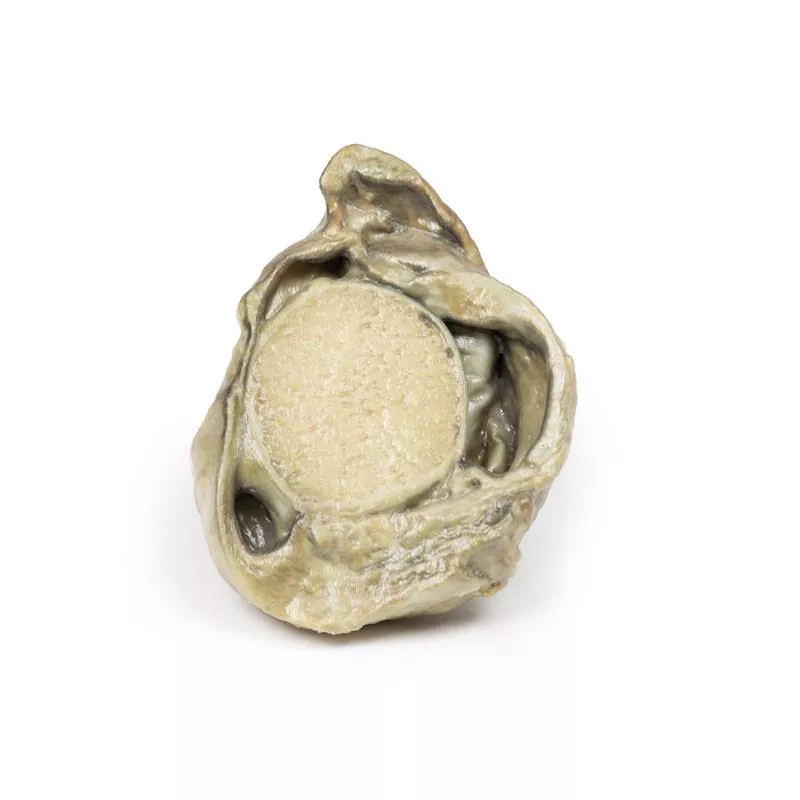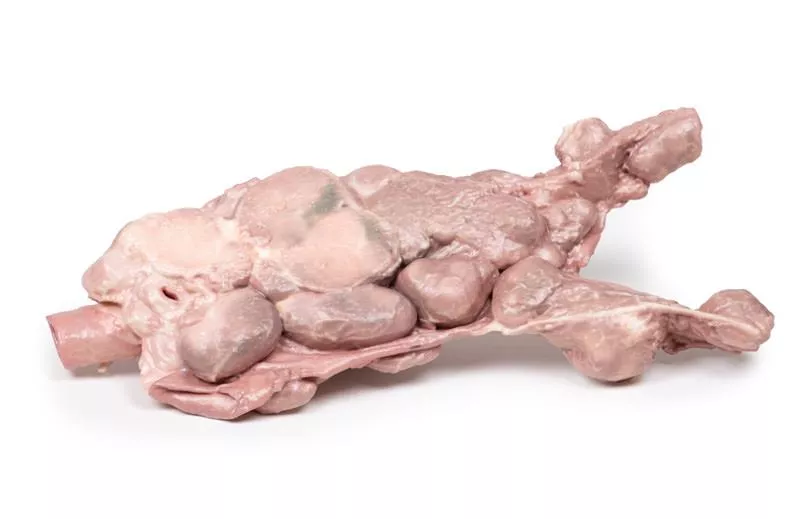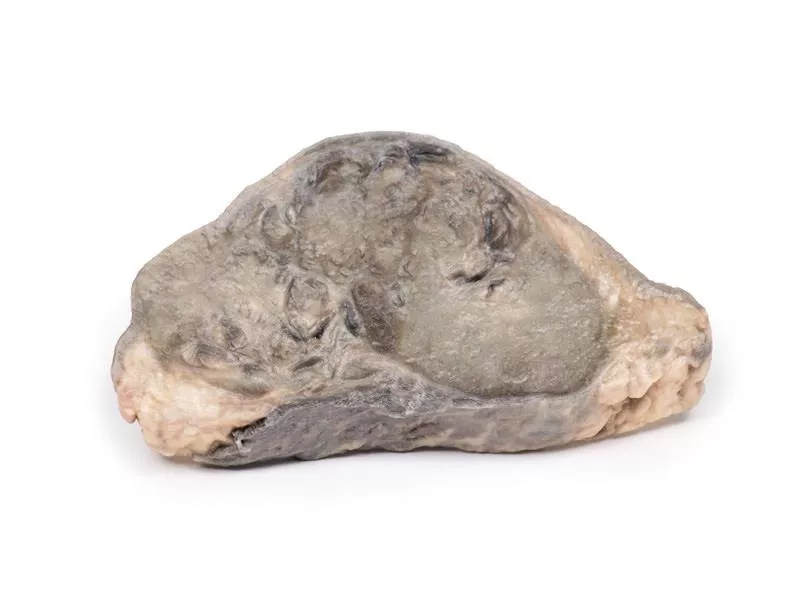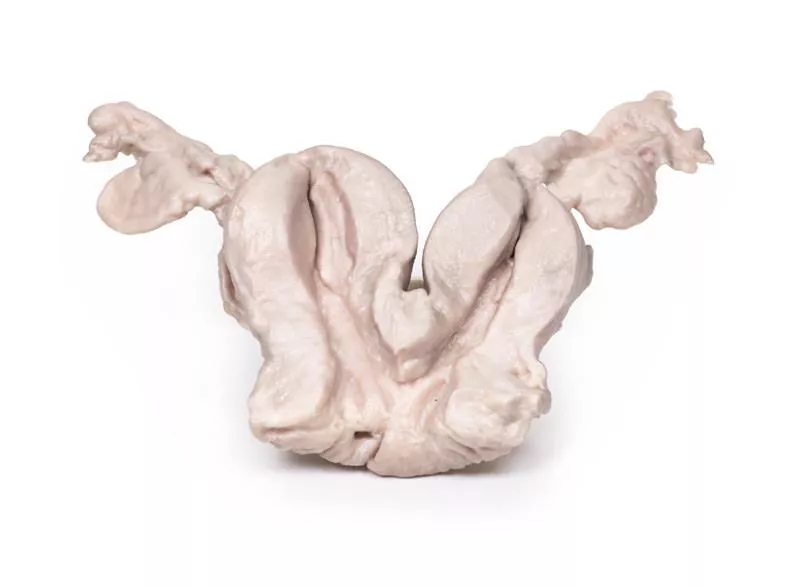Product information "Hydrocoele"
Clinical History
A patient with diabetes and previous myocardial infarctions presented with bilateral pleural effusion, peripheral oedema, and a swollen scrotum showing transillumination. Chest x-ray revealed congestive heart failure. Despite treatment, the patient died during admission.
Pathology
The testis and coverings show a distended cavity between the visceral and parietal layers of the tunica vaginalis due to fluid accumulation, representing a hydrocele secondary to generalized oedema from heart failure.
Further Information
A hydrocele is serous fluid between the layers of the tunica vaginalis. It can be communicating (linked to the peritoneal cavity) or non-communicating. Communicating hydroceles arise from failure of processus vaginalis closure and may be congenital or develop later, often due to increased abdominal pressure, like heart failure. Non-communicating types result from fluid imbalances due to infections, trauma, tumors, or lymphatic issues.
Patients notice a scrotal swelling, uni- or bilateral. Communicating hydroceles may vary in size with pressure; non-communicating are usually stable. Swellings are generally painless unless complicated by infection or torsion. Larger hydroceles can cause skin problems.
Diagnosis is clinical, aided by transillumination and ultrasound to rule out other causes. Tumor markers like AFP and B-HCG may exclude cancer. Many congenital hydroceles resolve by age two; persistent or symptomatic cases may require surgical repair. Treating the underlying cause can also resolve reactive hydroceles.
A patient with diabetes and previous myocardial infarctions presented with bilateral pleural effusion, peripheral oedema, and a swollen scrotum showing transillumination. Chest x-ray revealed congestive heart failure. Despite treatment, the patient died during admission.
Pathology
The testis and coverings show a distended cavity between the visceral and parietal layers of the tunica vaginalis due to fluid accumulation, representing a hydrocele secondary to generalized oedema from heart failure.
Further Information
A hydrocele is serous fluid between the layers of the tunica vaginalis. It can be communicating (linked to the peritoneal cavity) or non-communicating. Communicating hydroceles arise from failure of processus vaginalis closure and may be congenital or develop later, often due to increased abdominal pressure, like heart failure. Non-communicating types result from fluid imbalances due to infections, trauma, tumors, or lymphatic issues.
Patients notice a scrotal swelling, uni- or bilateral. Communicating hydroceles may vary in size with pressure; non-communicating are usually stable. Swellings are generally painless unless complicated by infection or torsion. Larger hydroceles can cause skin problems.
Diagnosis is clinical, aided by transillumination and ultrasound to rule out other causes. Tumor markers like AFP and B-HCG may exclude cancer. Many congenital hydroceles resolve by age two; persistent or symptomatic cases may require surgical repair. Treating the underlying cause can also resolve reactive hydroceles.
Erler-Zimmer
Erler-Zimmer GmbH & Co.KG
Hauptstrasse 27
77886 Lauf
Germany
info@erler-zimmer.de
Achtung! Medizinisches Ausbildungsmaterial, kein Spielzeug. Nicht geeignet für Personen unter 14 Jahren.
Attention! Medical training material, not a toy. Not suitable for persons under 14 years of age.






































